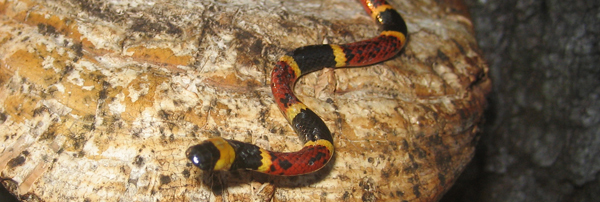- info@wildlife-removal.com
Call us for help in your town
Wildlife Removal Education
About Snakes Information
Need snake removal in your hometown? We service over 500 USA locations! Click here to hire us in your town and check prices - updated for year 2020.
Appearance
The snake has a triangular head defined by strong jaws for food consumption. Its lidless eyes can easily detect heat and movement. There are no visible ears on the head but the slithery reptile responds to VLF (very low frequency) noise or vibrations. Snakes have a large size and length variation, varying from a few inches to 50 feet. They have no legs and their movement is usually in two directions – sideways or upwards.
Snake skin is covered by protective scales that overlap and they are able to adapt the color of their scales into muted earth, a defensive mechanism against predators. These scales can be smooth or rough and typically have a dry texture. Most snakes use specialized belly scales to move and grip surfaces. The shape of their body is hose-like and elongated. This implies that snakes are able to move majorly in a horizontal direction.

Habitat
Snakes can survive in all kinds of climate, with the exception of regions or areas with freezing temperatures lasting for most of the year. Being cold-blooded, they are unable to regulate their body temperature in the cold Antarctica region. In urban and suburban settings, snakes tend to be attracted to water-logged areas more than dry areas. They are also drawn to dirty areas because of the likely presence of food (insects) in those places.
Snake species that reside in sandy areas tend to move sideways, while snakes found in water logged areas usually know how to swim. Snakes found in dense vegetative areas meanwhile, have a back and forth kind of movement. This type of movement is the most commonly seen.
Behavior and Venom
Snakes have poor sight and hearing. While hunting, they detect their prey primarily by means of vibrations, heat, and chemical signals picked by their other senses. Snakes shed their scales periodically in a process called Ecdysis or molting – the complete outer layer of skin is shed in one layer just like removing a sock.
Most snake species are nonvenomous and the venomous species use their venom primarily to kill and subdue prey rather than for self-defense. They also have varying degrees of venom in terms of potency. Nonvenomous snakes either their swallow prey alive or kill them by constriction.
Reproduction
Snakes generally live a solitary life except at mating seasons when the mature males compete for a female to mate with. Most snakes reproduce by laying eggs, while some larger snakes like the boa constrictor and green anaconda give birth to live, young snakes. Most of the time, the eggs are laid and abandoned, except for a few species like the king cobra and pythons. Once the eggs have hatched into young snakes, they are left to fend for themselves from the instant they are born. They are very vulnerable to a variety of predators including birds, foxes, and lizards. This results in a high mortality rate among snakes.
Diet
All snakes are carnivores regardless of size. They feed on smaller pests like mice, lizards, fish, birds, snails, crickets and all sorts of insects; plus the eggs of these pests. Snakes play a huge role in the control of rodent pests especially.
Snakes mostly swallow their prey whole and alive, which means that the size of the prey depends on the size of the snake. After eating, digestion takes a variable length of time in snakes, but is usually an intense and energy-consuming activity. During this time, the snake becomes mostly dormant.
Snake Bites
Cases of snake bites abound in the US and other parts of the world and they have resulted in a large number of deaths - most of these deaths happening within 15 minutes of being bitten by the snake. It has however been estimated that the risk of venomous snakebites to humans in the United States is 20 times less than that of being struck by lightning.
The reptile is also known to transmit infections like Aeromonus hydrophila, Q fever, proteus vulgaris, and mycobacterium ulcerans. Examples of venomous snakes are Rattle snakes, Cottonmouth, Water Moccasins and the Coral Snake.
Go back to the Snake Removal page.


















